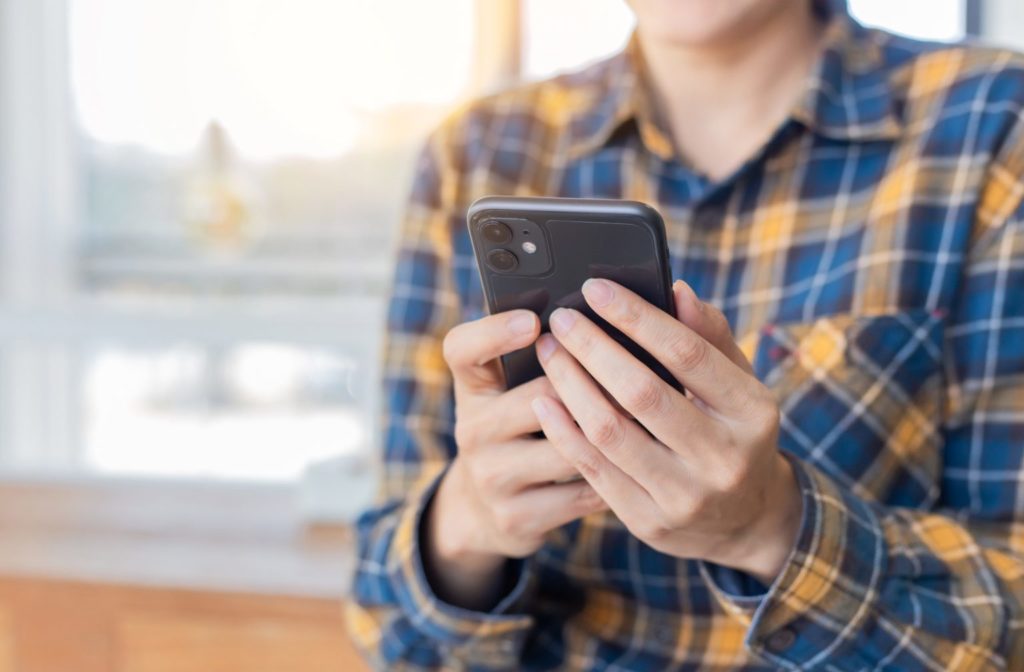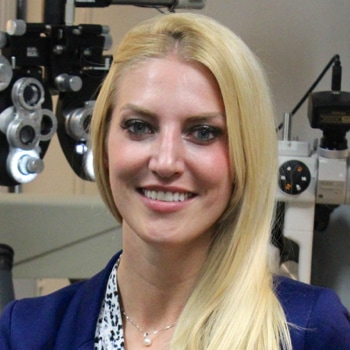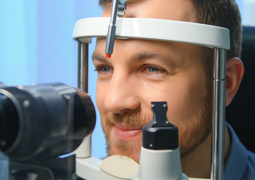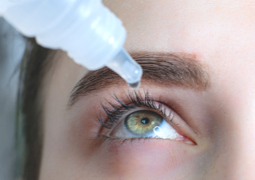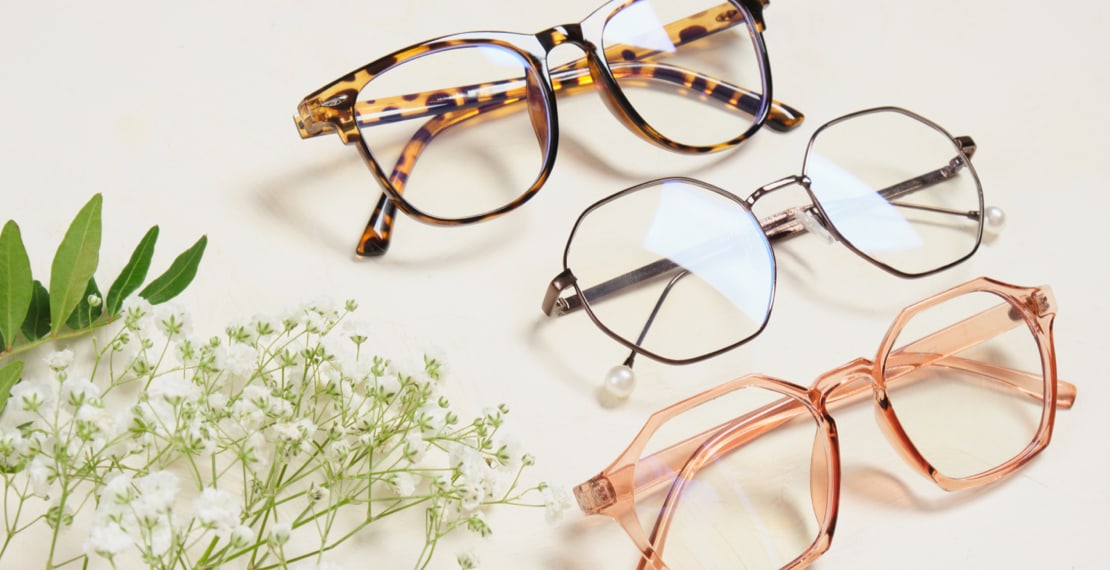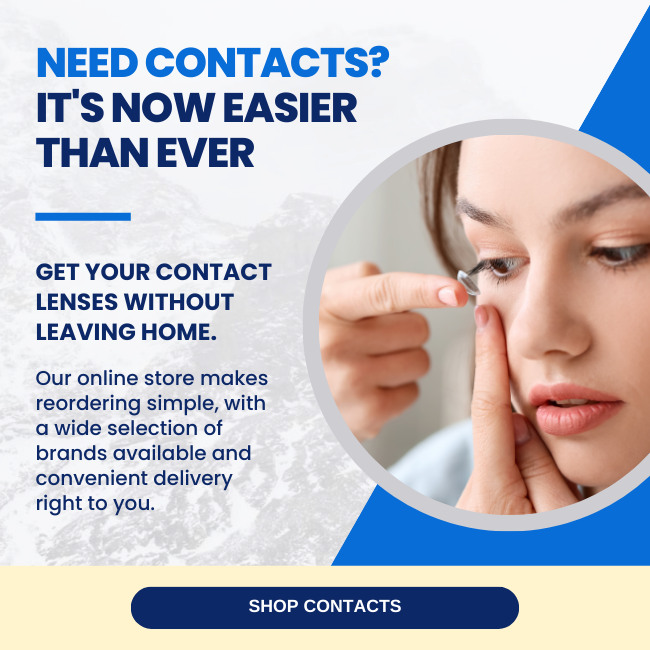Do Phones Damage Eyesight?
Phones have come a long way. From simple communication devices to handheld computers, our phones perform crucial roles in our everyday lives.
We spend a lot of time staring at our phones, but can phone screens damage our sight?
There’s a lot of talk about how our digital world changes our health. For example, how are our eyes affected by artificial blue light or too much screen time?
Constant use of our phone screens can lead to digital eye strain, but there are ways to help reduce your risk of uncomfortable symptoms and further eye damage. Here are 6 tips to prevent eye damage from your phone:
- Screen position
- Screen contrast
- Reduce glare
- 20-20-20 rule
- Don’t forget to blink
- Get regular eye exams
Talk to the trusted optometrists at Calgary Family Eye Doctors if you’re concerned about your eyesight.
Do Phones Screens Cause Digital Eye Strain
If you’re thinking: why do my eyes hurt when I look at my phone? You may be experiencing the symptoms of digital eye strain.
One of the most common concerns caused by phone screens and digital devices is digital eye strain. Digital eye strain, also known as computer vision syndrome, is a group of symptoms caused by intense visual focusing on digital screens.
On average, Albertans spend 10.5 hours on digital devices every day, and 70% experience symptoms of digital eye strain. The most common symptoms of prolonged screen use are:
- Eye strain
- Dry eyes
- Eye pain
- Headaches
- Blurry vision
- Double vision
- Watery eyes
- Eye irritation
Most symptoms of digital eye strain cause temporary changes. However, symptoms can increase or continue without treatment, reducing visual abilities.
Can Blue Light from Phone Screens Damage Eyesight?
Blue light is shorter wavelength light. It isn’t new, and it doesn’t only come from phone screens. Even the sun emits blue light. You might be more familiar with UV rays and their damaging effects. Although blue light waves aren’t as powerful as UV waves, there are still many potential risks.
Prolonged exposure to blue light harms vision and eye health by damaging the retina. The retina, located in the back of the eye, is crucial for converting light into signals. Those signals are what our brain understands as vision.
Phone screens, and other digital devices, generate blue light differently than natural sources. As a result, the blue light scatters more in the eye, creating more visual noise. The overstimulation leads to eye strain.
Here’s how the scatter effect works: Imagine you’re watching a movie on a screen across the room. You can see the image and understand it. Then, imagine placing the screen directly in front of your eyes. The images might not make sense because you’re too close. The movie hasn’t changed, but your ability to perceive it is drastically different.
Sleep and Eye Health
Another negative impact of phone screens and your eye health is how it changes sleep cycles. Blue light tells our bodies to be alert during the day and settle down for the night. Before the age of digital devices, the sun was our primary source of blue light, so it naturally set our sleep cycle.
Times have changed, and we now have access to blue light at night and in the palm of our hand. So when we use our phones in the evening or at night, the blue light tells our brain to stay alert instead of falling asleep.
Sleep has multiple benefits for our overall health, such as:
- Restoring energy
- Repairing tissues
- Maintaining body functions
- Processing new information (brain)
Getting enough quality sleep helps maintain our health and losing sleep interferes with healing. Sleep deprivation is harmful to our eyes and can increase our risk for dry eye, irritation, and infection.
If you’re having trouble falling asleep or are restless at night, late-evening phone use might be the cause.
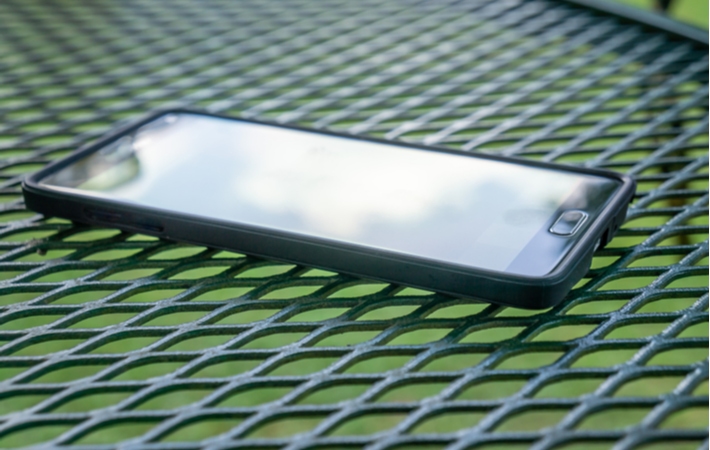
How to Prevent Eye Damage From Phones
Protecting your eyes from digital eye strain and blue light begins with changing lifestyle habits. Here is what you can do at home or work to reduce your risk of eye damage.
Screen Position
If you rest your phone on your pillow as you lay in bed, your phone is too close! Instead, your screen should be an arm’s length away and positioned 20 degrees below your eye level.
Screen Contrast
Screen brightness should match the brightness of your surroundings. If you feel your eyes straining to stare at your phone, play around with the colour and tone settings until it’s easier on your eyes.
Reduce Glare
Glare can make our eyes work harder, such as squinting around a ray of sunlight. You might add an anti-glare screen cover, position your screen away from windows, or dim other artificial light sources. Keeping your screen clean can also improve visual clarity, straining your eyes less.
If you need additional relief, at Calgary Family Eye Doctors we offer blue block AR coatings. These coatings reduce blue light, reflections and unwanted glare. This is an easy way to help cut down on blue light exposure.
20-20-20 Rule
The 20-20-20 rule is a reminder to take breaks from screen time. For every 20 minutes of screen time, you should take a 20-second break and look at an object 20 feet away (approximately 6 metres).
Blink Regularly
You may think, how could I forget to blink? But staring at screens can reduce the frequency of blinking, leading to dry eyes and discomfort. Be conscious of blinking regularly to keep your eyes moist.
Routine Eye Exams
Visit your eye doctor regularly to ensure your eyes are healthy and to address any vision problems that may contribute to eye strain. Your optometrist can also make recommendations for eye strain management based on your unique eyes and lifestyle.
Better Eye Health Habits
Digital devices and smartphones aren’t going away, but you can protect your vision with better eye health habits. If lifestyle changes don’t relieve your symptoms, visit our practice for a comprehensive eye exam. We can discuss your eye care and work together to find solutions.


